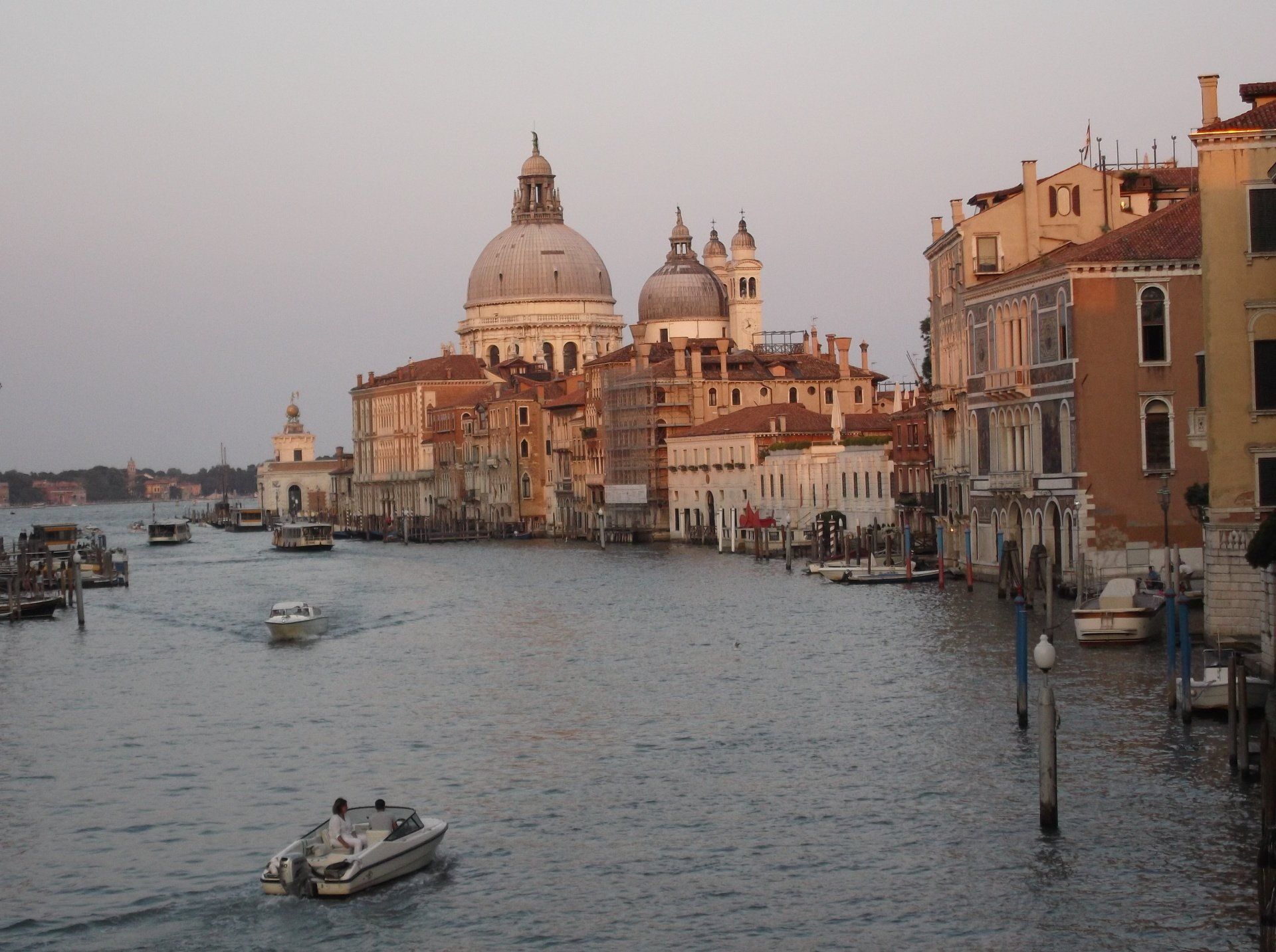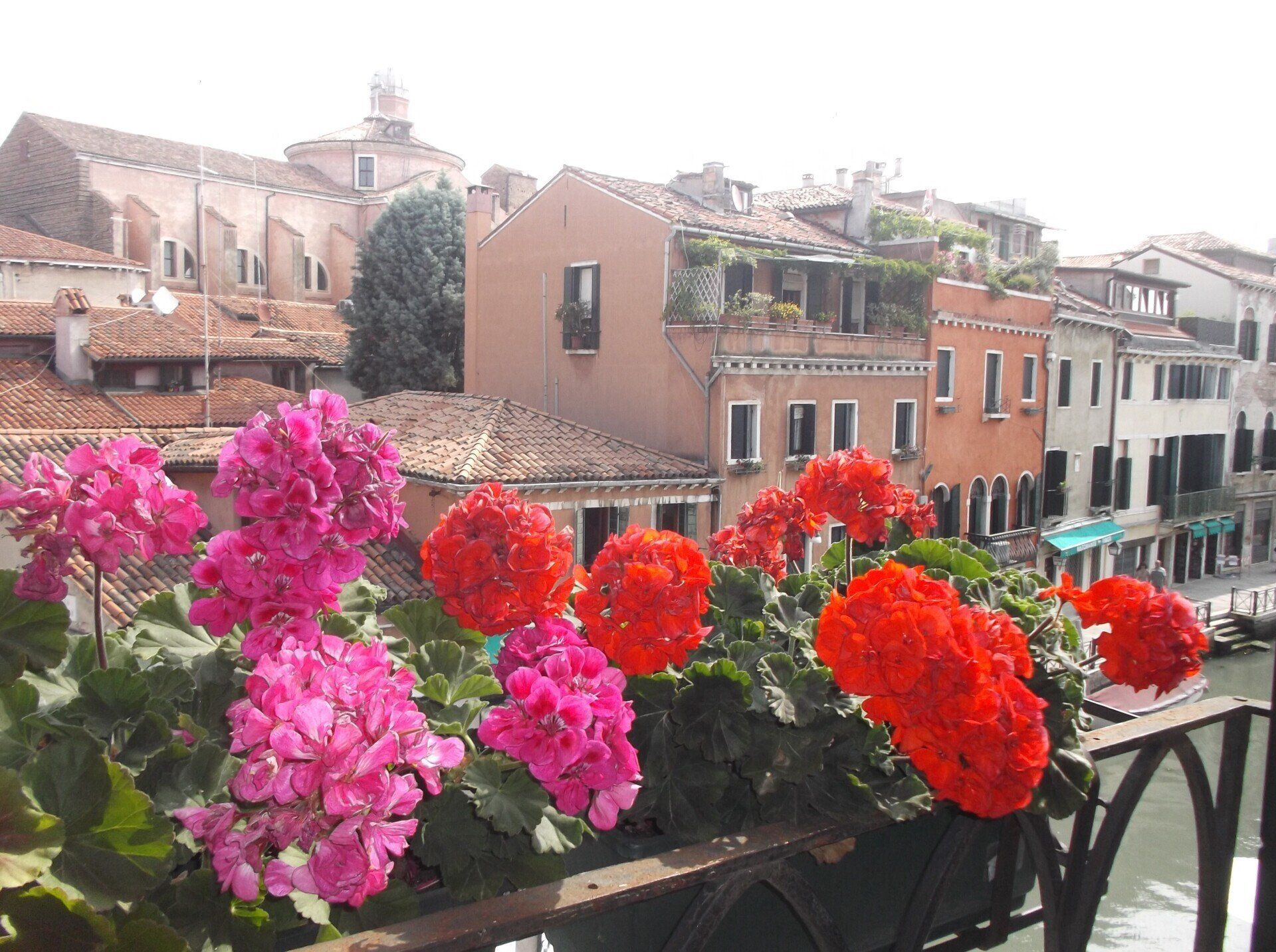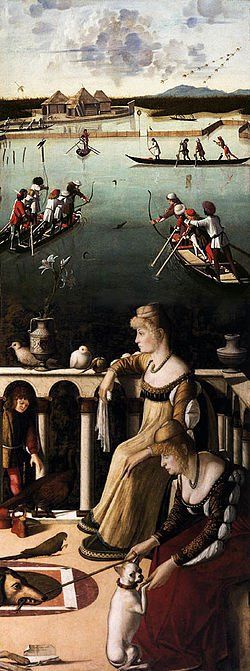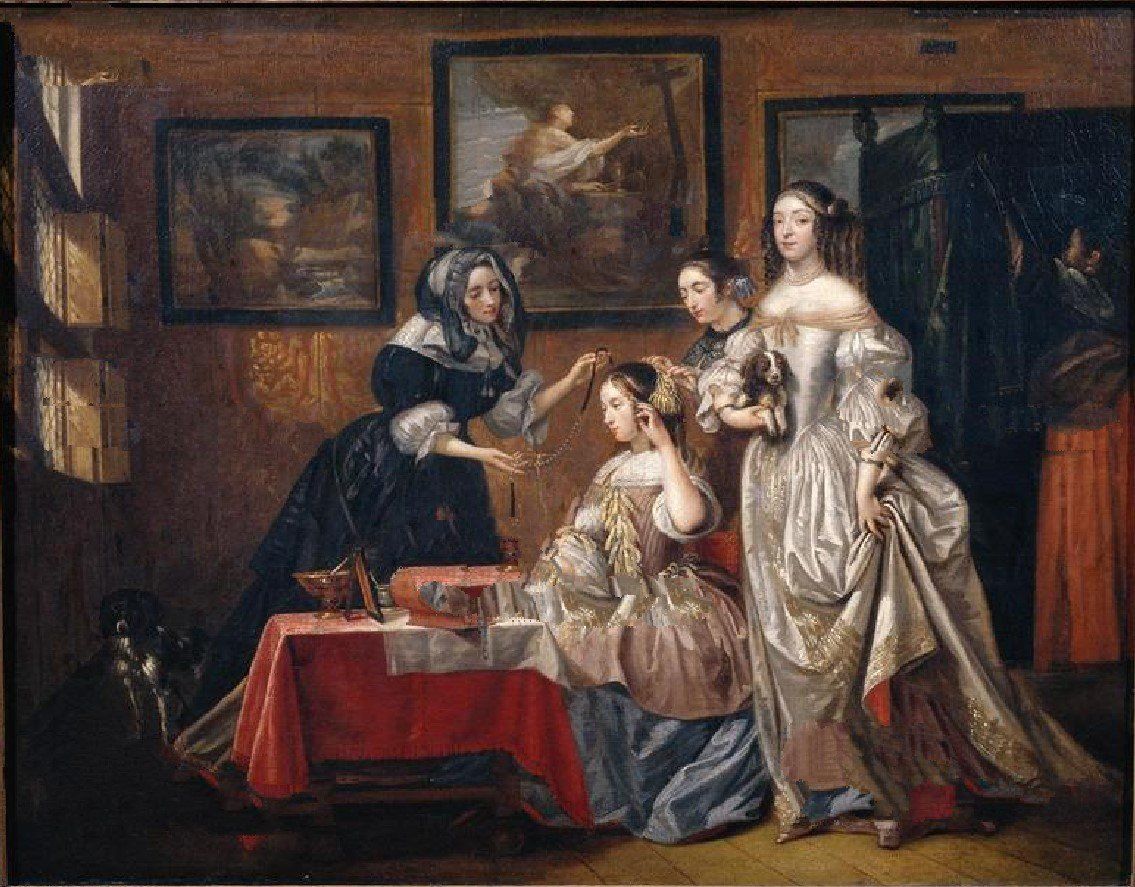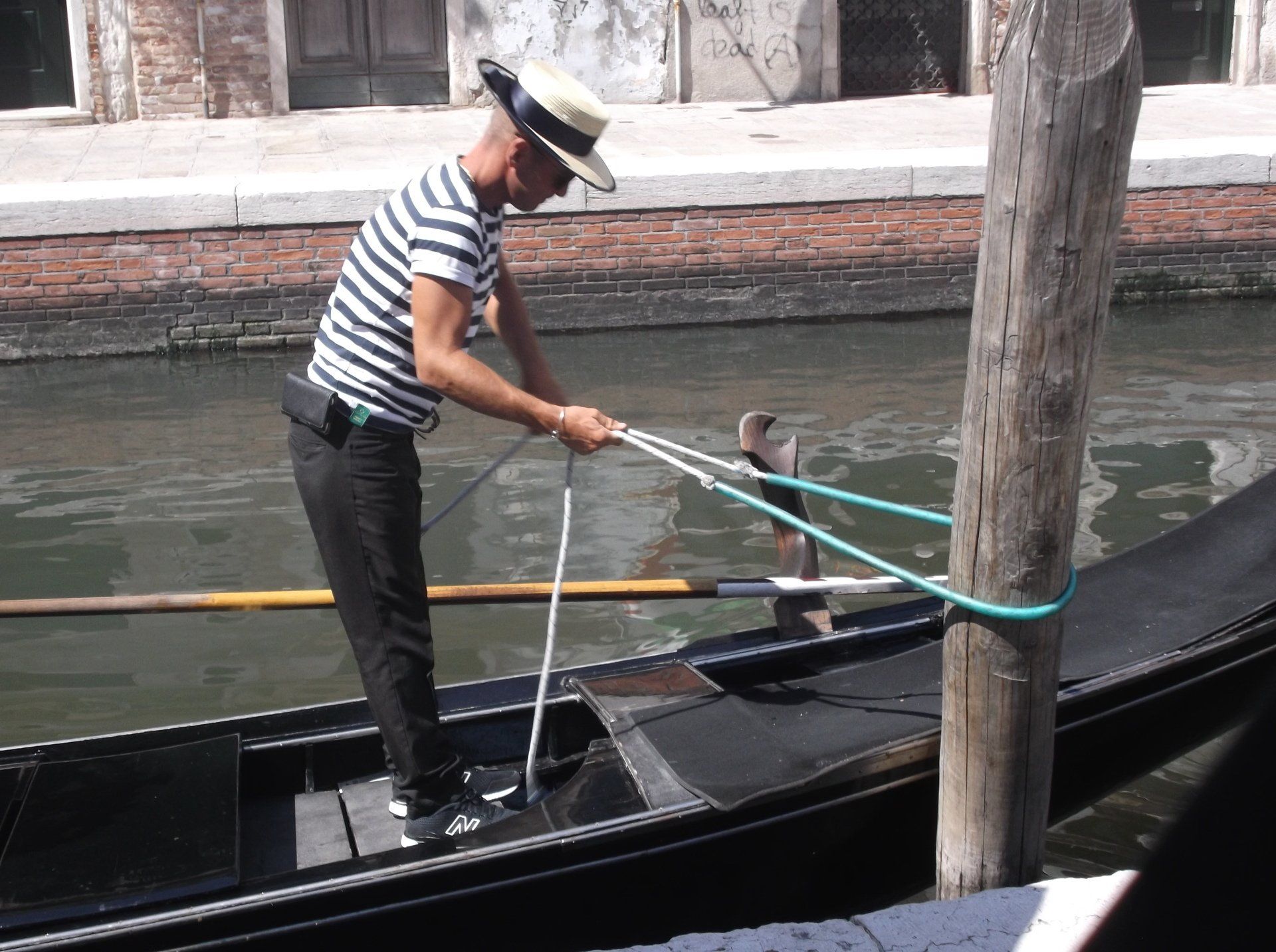SPOT THE DIFFERENCE
In the fifteenth century, Venetian painter Vittore Carpaccio put brush to canvas and came up with this famous work. It was entitled The Courtesans, and showed two women awaiting their male callers. Thus the matter rested for centuries. Recent technical analysis, however, has put the cat among the pigeons by confirming that the women were not courtesans at all. Far from it: they were in fact noblewomen awaiting the return of their husbands.
How had this mistake come about? The painting had been divided and displayed as two separate panels - the upper section became known as Hunting in the Lagoon, the lower section as The Courtesans. But taken as a single work - as Carpaccio intended - changed matters. The women were clearly passing the time while their husbands persued the aristocratic activity of duck hunting.
It underscores the point that many of the city's top sex-sellers were, in appearance, demeanour and lifestyle, the equal of noblewomen.
In matters of dress they were also made to tow the line. Gold jewellery and pearls were a definite no-no, these being considered the refinements of noblewomen. And when out and about in Venice, prostitutes of all ranks were required to wear bright red or yellow costumes to identify themselves. It was for this reason they became known as the 'tulips of Venice.'
You have to wonder at the thinking behind these punitive measures. The Venetian ruling council should have been grateful to its prostitutes, not made life hard for them. Prostitutes had every incentive to behave and stay out of trouble. They were registered and paid taxes. Given the huge number of women engaged in the sex industry - and it endured for centuries - the revenue generated by their labours went a long way toward funding the Republic's never-ending wars.
A little thank you might have been in order.
